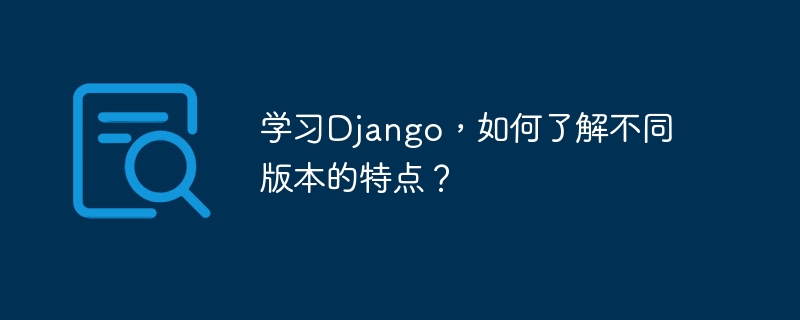
学习Django,如何了解不同版本的特点?
Django是广泛使用的Python Web框架之一,最新的版本是Django 3.1。然而,随着Django的版本更新,其中的一些特点和API可能会发生变化。作为Django开发者,了解不同版本的特点是非常重要的,这将帮助我们更好地使用和升级Django。
在这篇文章中,我们将详细介绍如何了解不同版本的Django特点,并通过具体的代码示例来说明。让我们开始吧!
Django 2.0的重要特点:
Django 3.0的重要特点:
示例1:Django 2.0中的新路由系统
下面的代码展示了Django 2.0中新引入的路由系统如何工作:
# myapp/urls.py
from django.urls import path
from . import views
urlpatterns = [
path('hello/', views.hello_world),
]
# myapp/views.py
from django.http import HttpResponse
def hello_world(request):
return HttpResponse("Hello, World!")在这个示例中,我们使用了新的path()函数来定义URL路由。这个新的路由系统更加简洁和直观,与旧的url()函数相比更加易于使用和维护。
示例2:Django 3.0中的ASGI支持
以下示例展示了Django 3.0中的ASGI支持如何工作:
# myproject/asgi.py
import os
from django.core.asgi import get_asgi_application
os.environ.setdefault('DJANGO_SETTINGS_MODULE', 'myproject.settings')
application = get_asgi_application()在这个示例中,我们使用了新的get_asgi_application()函数来获取ASGI应用程序。这使得Django能够处理异步请求,并与ASGI服务器进行交互。
通过编写和运行这些示例代码,我们可以更好地理解和体验Django 2.0和Django 3.0中的新特性。
总结
了解不同版本的Django特点是成为一个优秀的Django开发者的关键。通过阅读官方文档和编写示例代码,我们可以更深入地了解每个版本的新特性和重要改进。这样,我们就能更好地利用Django的优势,并在升级到新版本时能够及时适应变化。
希望这篇文章对你学习Django版本的特点有所帮助!开始探索吧!
以上就是了解Django各个版本的特点有哪些方法?的详细内容,更多请关注php中文网其它相关文章!

每个人都需要一台速度更快、更稳定的 PC。随着时间的推移,垃圾文件、旧注册表数据和不必要的后台进程会占用资源并降低性能。幸运的是,许多工具可以让 Windows 保持平稳运行。

Copyright 2014-2025 https://www.php.cn/ All Rights Reserved | php.cn | 湘ICP备2023035733号